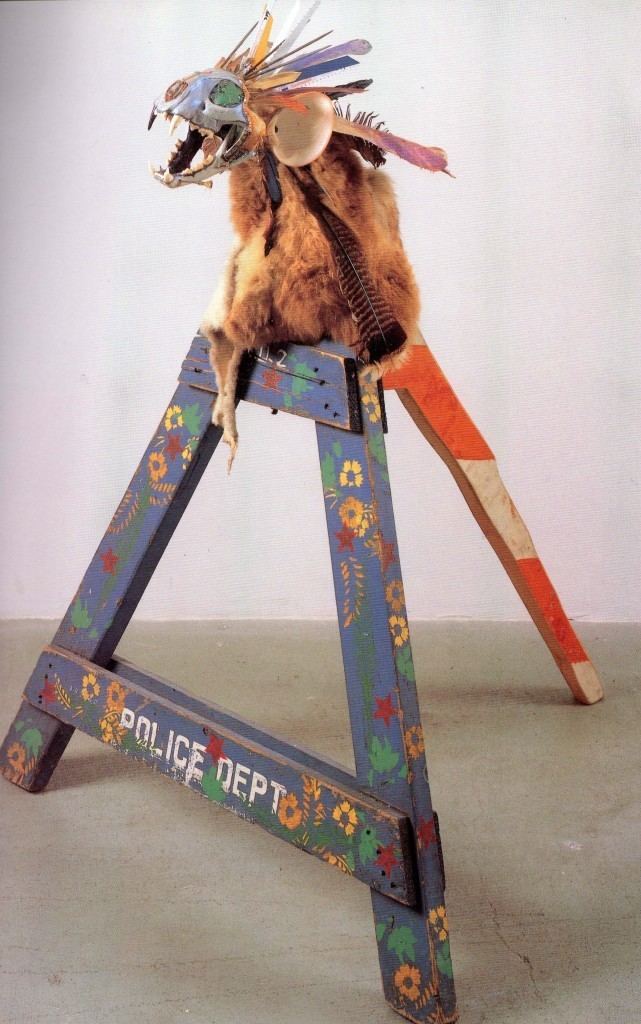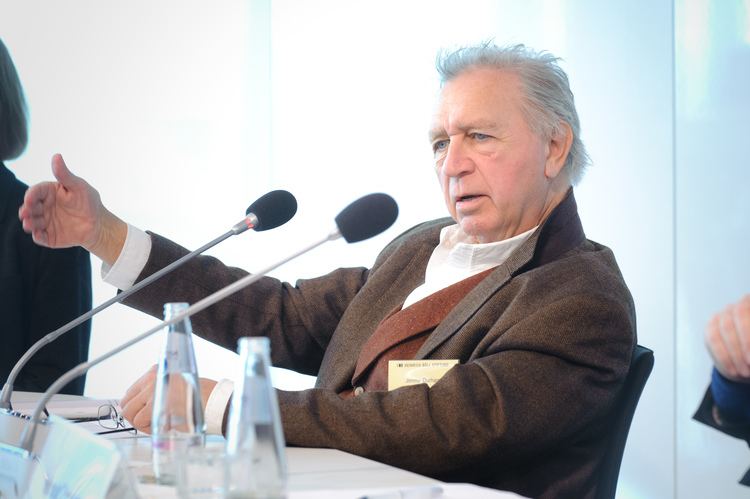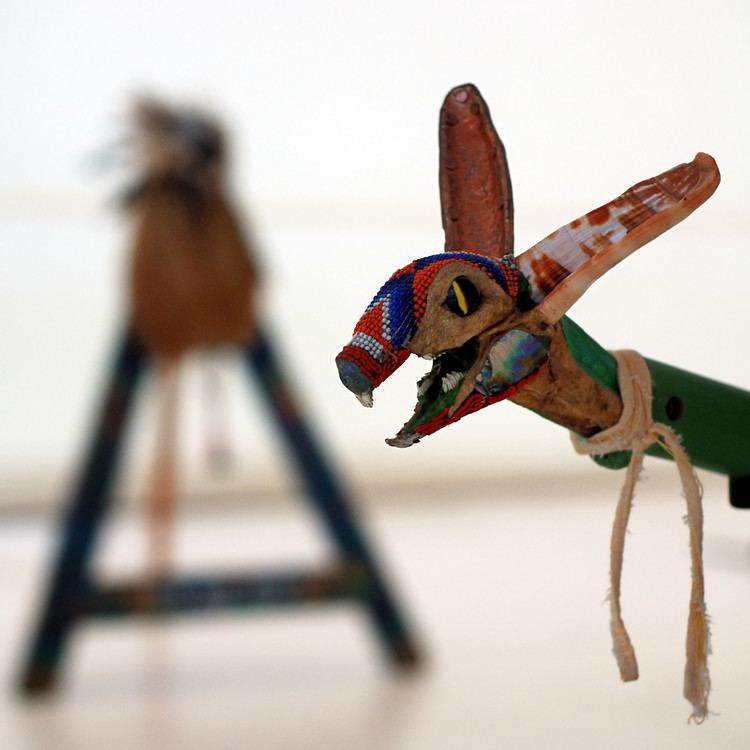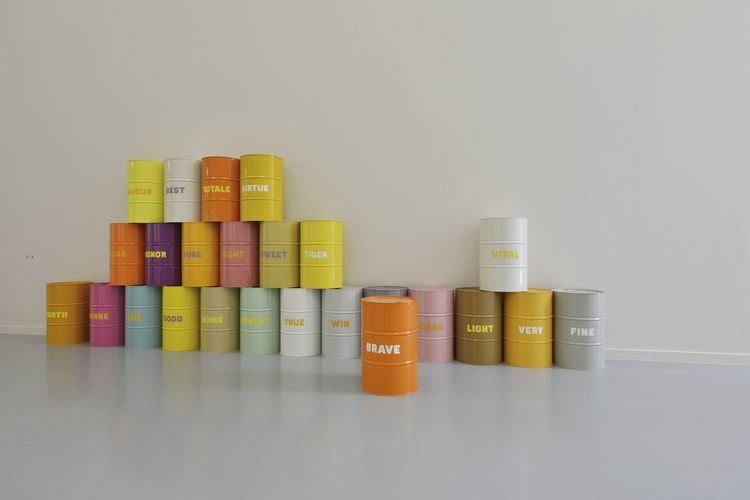Name Jimmie Durham | Role Essayist | |
 | ||
Education Ecole nationale superieure des Beaux-Arts Books Jimmie Durham, A certain lack of coherence, Poems that Do Not Go Together, Columbus Day, Second Particle Wave Th | ||
Artist talk jimmie durham
Jimmie Durham (born 1940) is an American-born sculptor, essayist and poet, living and working in Europe since 1994. He was active in the United States in the civil rights movements of African Americans and Native Americans in the 1960s and 1970s, serving on the central council of the American Indian Movement (AIM). He returned to working at art while living in New York City. His work has been extensively exhibited.
Contents
- Artist talk jimmie durham
- Jimmie durham a matter of life and death and singing
- Background
- Activism
- Art career
- References

He has long claimed to be Cherokee but that claim has been denied by tribal representatives: "Durham is neither enrolled nor eligible for citizenship in any of the three federally-recognized and historical Cherokee Tribes: the Eastern Band of Cherokee Indians, the United Keetoowah Band of Cherokee Indians of Oklahoma, and the Cherokee Nation." He has "no known ties to any Cherokee community".

Jimmie durham a matter of life and death and singing
Background

Jimmie Durham was born on July, 10, 1940, in Harris County, Texas, Nevada County, Arkansas, or Washington, Hempstead County, Arkansas. His parents are Jerry Loren Durham and Ethel Pauline Simmons Durham, both born in Arkansas and buried in Texas.

Durham has claimed to be quarter-blood Cherokee and to have grown up in a Cherokee-speaking community. He was raised in Texas, Louisiana, and Oklahoma, as his father traveled looking for work. According to Cherokee lawyer, justice and law professor Steve Russell, Durham is among "professional posers" who masquerade as Cherokee and Native American for the purposes of career advancement. Durham is described as having "made a career of being Cherokee with no known ties to any Cherokee community, although he has claimed to be Wolf Clan and to have been raised with Cherokee as a first language."

In the 1960s Durham became active in theater, performance, and literature related to the civil rights movement in the 1960s. In 1965 he moved to Austin, where he enrolled at the University of Texas at Austin and started exhibiting his work. His first solo exhibition in Austin was either in 1965 or 1968. In 1969 Durham moved to Geneva, Switzerland, where he studied at L'École des Beaux-Arts.

In June 2017, ten Cherokee tribal representatives, artists and scholars published an open letter about Durham, titled, "Dear Unsuspecting Public, Jimmie Durham Is a Trickster - Jimmie Durham’s indigenous identity has always been a fabrication and remains one":
Durham is neither enrolled nor eligible for citizenship in any of the three federally-recognized and historical Cherokee Tribes: the Eastern Band of Cherokee Indians, the United Keetoowah Band of Cherokee Indians of Oklahoma, and the Cherokee Nation. These false claims are harmful as they misrepresent Native people, undermine tribal sovereignty, and trivialize the important work by legitimate Native artists and cultural leaders.
They went on to state that by claiming to exhibit his work as a Cherokee person, Durham is in violation of the Indian Arts and Crafts Act.
Activism
In 1973, Durham returned to the United States and became involved with the American Indian Movement (AIM). From 1973 until 1980 he worked as a political organizer with AIM, becoming a member of the movement’s Central Council and representing himself as Native American. Usually he claimed to be Cherokee and wrote on behalf of the organization.
In 1974, he attended International Indian Treaty Council (IITC) conference at the Standing Rock Indian Reservation. He later became chief administrator of the IITC and worked toward the United Nations granting the IITC status as a "Category II nongovernmental organization observer and consultant under the Economic and Social Council." Durham befriended Winona LaDuke (White Earth Ojibwe) and encouraged her activism. Paul Chaat Smith (Comanche) and Durham resigned from the IITC and AIM in 1979 over disagreements about AIM's support of Cuba and other Soviet allies.
Art career
After moving to New York City, Durham, focused his attention to visual art. He created sculptures that challenged conventional representations of North American Indians. He exhibited and published essays frequently. From 1981 to 1983 he directed the Foundation for the Community of Artists in New York. In 1983 West End Press published Columbus Day, a book of his poems. His poetry was included in Harper’s Anthology of 20th Century Native American Poetry (1988).
In 1987 Durham moved to Cuernavaca, Mexico. During his time in Mexico, Durham exhibited widely, including at the Whitney Biennial, documenta IX, Institute of Contemporary Arts, London; Exit Art, the Museum of Modern Art, Antwerp; and the Palais des Beaux-Arts, Brussels. He also published a number of essays in periodicals, including Art Forum, Art Journal (CAA) and Third Text. In 1993 a collection of his essays, A Certain Lack of Coherence, was published by Kala Press.
After several years in Mexico, Durham moved to Europe in 1994, initially relocating to Berlin and then Naples. Since that time, he has focused primarily on the relationship between architecture, monumentality and national narratives. His anti-architectural sculptures, performances and videos seek to liberate architecture’s privileged material, stone, from its metaphorical associations with monumentality, stability and permanence. His exhibitions in Europe have included venues such as the Hamburg Kunstverein, FRAC in Reims, Haus Wittgenstein in Vienna, Kunstverein Munich, and the Venice Biennale, among many others. He participated in A Grain of Dust A Drop of Water: The 5th Gwangju Biennale in 2004. In 2005 Durham co-curated The American West, an attack on cowboy and Indian mythology, at Compton Verney, United Kingdom. In 2006 he also had various of his work displayed at the Serralves Foundation, in Porto, Portugal. In 2009, a permanent public art piece by Durham, Serpentine rouge, was installed in Indre, France, along the Loire River. In 2010 Durham presented his Rocks Encouraged in the Portikus exhibition hall in Frankfurt am Main, Germany.
In 1995 Phaidon Press published Jimmie Durham, a comprehensive survey of his art, with contributions by Laura Mulvey, Dirk Snauwaert, and Mark Alice Durant. In 2009, a catalogue was published for a retrospective exhibition Pierre Rejetées... at Musée d'Art Moderne de la Ville de Paris.
Anne Ellegood of the Hammer Museum in Los Angeles curated the retrospective, Jimmie Durham: At the Center of the World, that opened at the Hammer and travels to the Walker Art Center, the Whitney Museum of American Art, and Remai Modern.
In their June 2017 editorial about Durham's claims to Cherokee identity, Cherokee representatives stated that, "as result of the 1990 Indian Arts and Crafts Act, several of Durham’s exhibitions were canceled. He left the United States, moving to Mexico and then to Europe."
